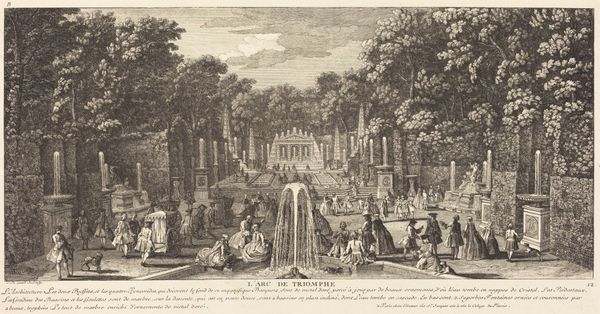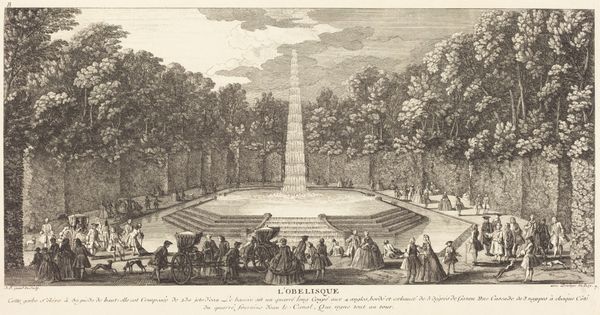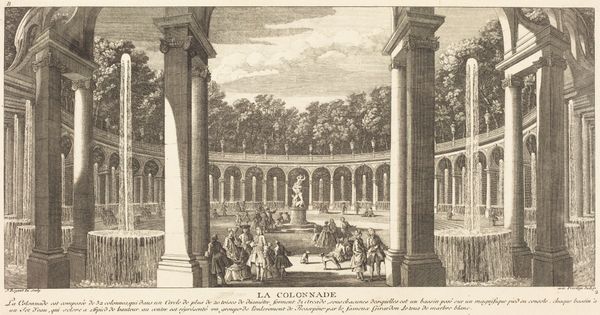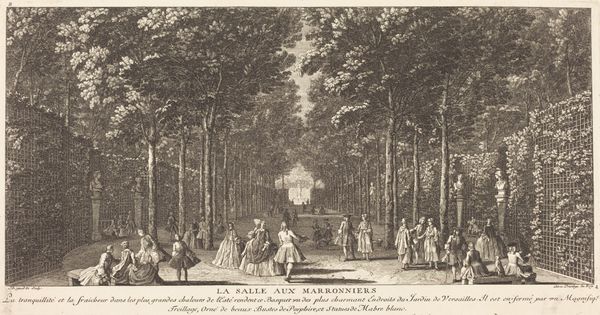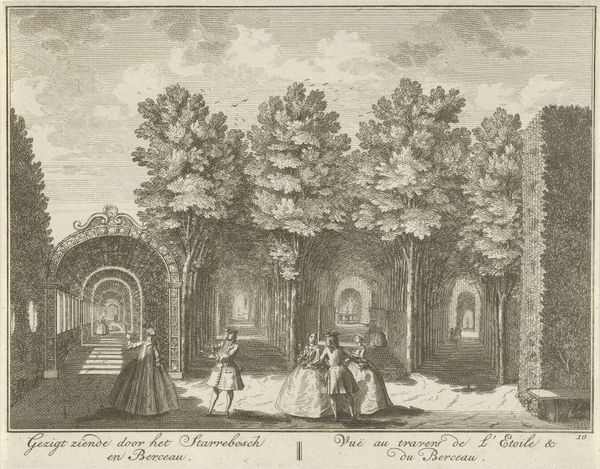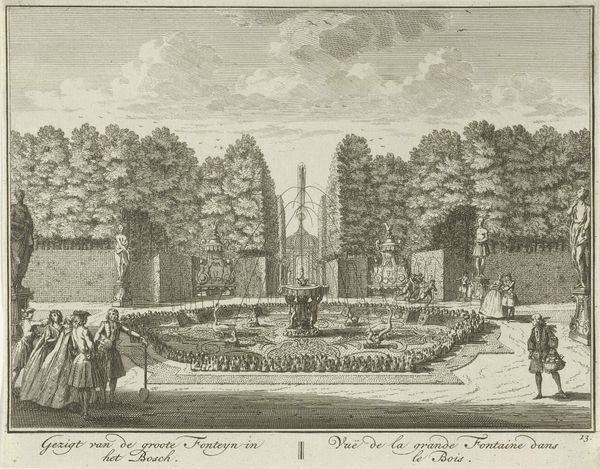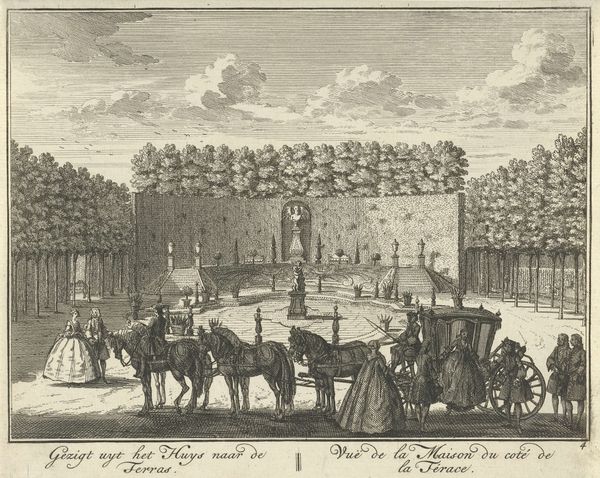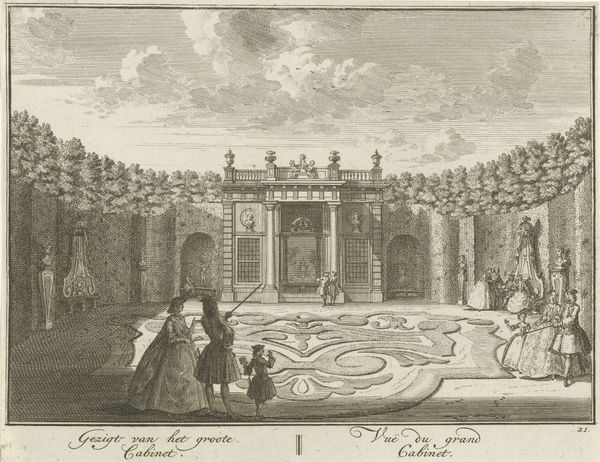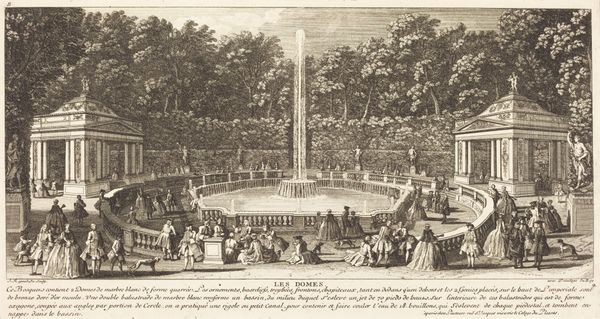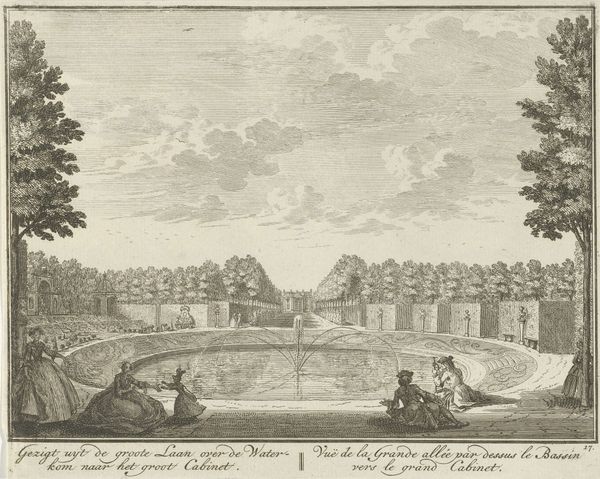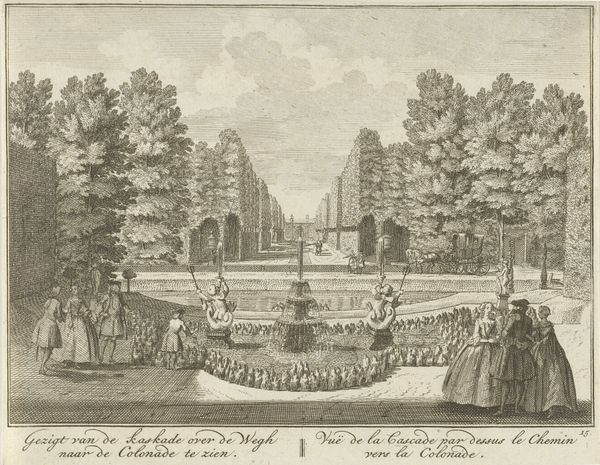
print, engraving
#
baroque
# print
#
old engraving style
#
landscape
#
classicism
#
cityscape
#
history-painting
#
engraving
Copyright: National Gallery of Art: CC0 1.0
Jean-Baptiste Rigaud's "Les Bains d'Apollon" etching offers a glimpse into the world of the French aristocracy, likely made in the 18th century. The artwork depicts a carefully designed garden with sculptures, drawing attention to the cultural values placed on wealth, leisure, and the aesthetic control of nature. The image creates meaning through visual codes. References to classical mythology, evident in the Apollon sculptures, establish a link with the prestige of ancient cultures. The scene’s emphasis on a leisurely gathering highlights social class and power during a time when the French monarchy was at its peak. The garden setting itself, carefully manicured and distinct from the wilderness, underscores the desire to dominate the natural world. Such emphasis on social hierarchy was the target of the French revolution that followed soon after. To understand it better, we can delve into historical accounts of the period, records of garden design, and studies of social life at Versailles. The meaning of art is always contingent on its social and institutional context, and this is why history matters.
Comments
No comments
Be the first to comment and join the conversation on the ultimate creative platform.
